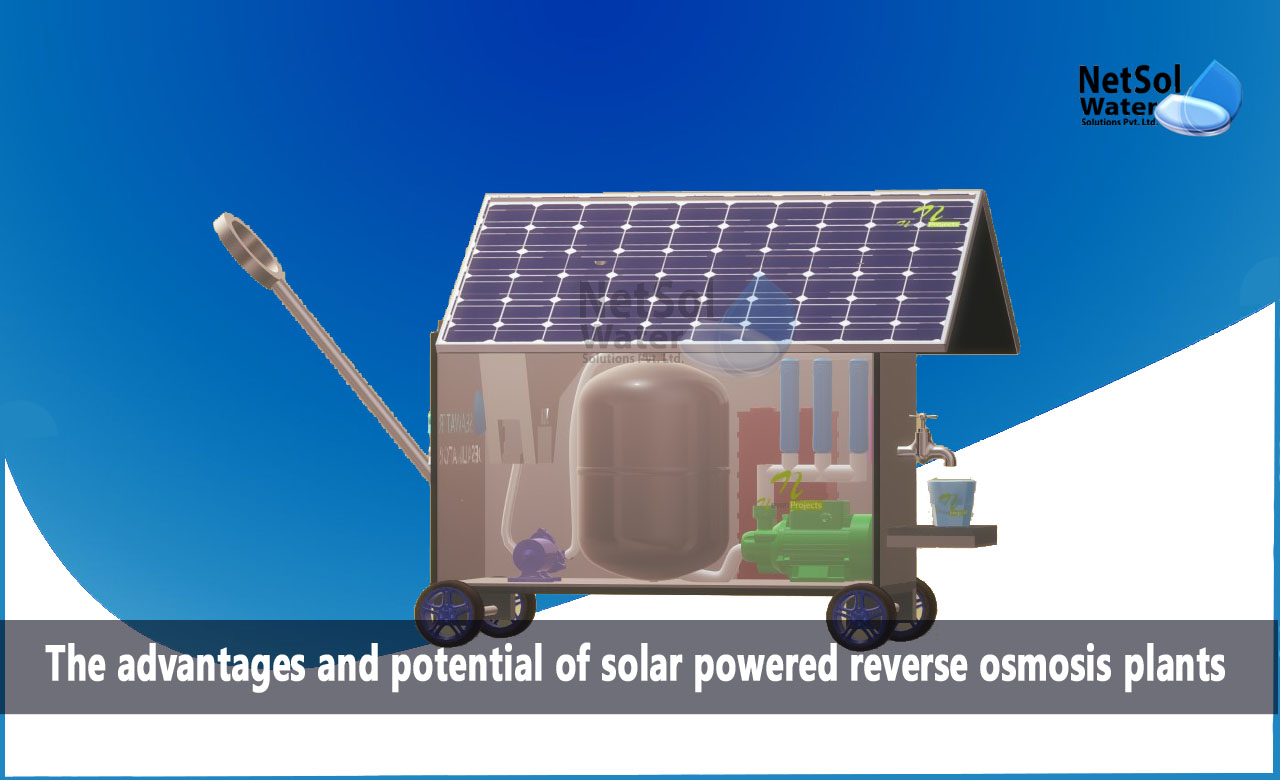Introduction
In the quest for sustainable and clean energy solutions, solar power has emerged as a frontrunner. Its applications go beyond traditional solar panels on rooftops, extending to innovative technologies like solar-powered reverse osmosis (RO) plants. By harnessing the sun's energy and combining it with reverse osmosis technology, these plants offer an eco-friendly and efficient approach to water treatment. In this blog, we will explore the advantages and potential of solar-powered reverse osmosis plants as a source of energy.
Harnessing Solar Energy for Reverse Osmosis:
Solar-powered reverse osmosis plants rely on the utilization of solar energy through various systems:
- Photovoltaic (PV) Systems: These systems convert sunlight directly into electricity using solar panels composed of photovoltaic cells.
- Concentrated Solar Power (CSP) Systems: CSP systems use mirrors or lenses to concentrate sunlight onto a receiver, generating heat that powers a turbine connected to a generator.
- Hybrid Solar Systems: Hybrid systems combine PV and CSP technologies, optimizing energy capture and utilization for the reverse osmosis process.
What is the advantages and potential of solar-powered RO Plants?
Solar-powered reverse osmosis plants offer several benefits:
- Renewable and Clean Energy Source: Solar energy is abundant and renewable, ensuring a continuous and sustainable power supply for water treatment.
- Energy Independence and Cost Savings: Solar power reduces dependence on traditional energy sources, resulting in long-term cost savings and stability.
- Environmental Sustainability: Solar energy is a clean and emission-free alternative, contributing to reduced carbon footprints and mitigating climate change.
- Scalability and Flexibility: Solar-powered reverse osmosis plants can be scaled up or down based on water demand, making them suitable for a range of applications.
- Off-Grid Applications: Solar-powered systems are particularly advantageous in remote or off-grid locations where access to electricity is limited.
Components of Solar-Powered Reverse Osmosis Plants:
Key components of solar-powered reverse osmosis plants include:
- Solar Panels and Arrays: These capture solar energy and convert it into usable electricity for powering the reverse osmosis process.
- Energy Storage Systems: Batteries or other energy storage technologies store excess solar energy generated during the day for use during non-sunlight hours.
- Reverse Osmosis Units: These specialized units utilize the captured solar energy to drive the reverse osmosis process, removing contaminants and producing clean water.
- Control and Monitoring Systems: These systems ensure the efficient operation of the plant, optimizing energy usage and monitoring performance.
Applications of Solar-Powered Reverse Osmosis Plants:
Solar-powered reverse osmosis plants find diverse applications:
- Rural and Remote Communities: These plants provide access to clean drinking water in areas with limited infrastructure or unreliable grid connections.
- Disaster Relief and Emergency Response: Solar-powered systems can quickly provide clean water in disaster-stricken areas where traditional infrastructure has been compromised.
- Off-Grid Water Treatment: Remote sites, such as eco-tourism resorts or research stations, can benefit from solar-powered reverse osmosis plants for self-sustaining water treatment.
- Sustainable Development Projects: Solar-powered plants contribute to sustainable development initiatives by providing clean water access to underserved communities.
- Developing Countries with Limited Infrastructure: Solar-powered systems offer an affordable and efficient solution for water treatment in regions where electricity infrastructure is lacking.
Overcoming Challenges:
While solar-powered reverse osmosis plants offer numerous advantages, some challenges exist:
- Variability of Solar Energy: The intermittency of solar energy requires efficient energy storage systems to ensure a continuous water treatment process.
- System Efficiency and Performance: Continuous improvement in technology is needed to optimize the efficiency and performance of solar-powered reverse osmosis plants.
- Initial Investment Costs: While the long-term operational costs are reduced, the initial capital investment for solar-powered systems may be higher compared to traditional methods.
Conclusion:
Solar-powered reverse osmosis plants represent a sustainable and reliable solution for water treatment, harnessing the power of the sun to produce clean and potable water. Their renewable nature, energy independence, and environmental benefits make them a viable option for various applications, including remote communities, disaster relief efforts, and sustainable development projects. As technology advances and costs decrease, solar-powered reverse osmosis plants have the potential to play a significant role in achieving global water security and sustainability.
Netsol Water is Greater Noida-based leading water & wastewater treatment plant manufacturer. We are industry's most demanding company based on client review and work quality. We are known as best commercial RO plant manufacturers, industrial RO plant manufacturer, sewage treatment plant manufacturer, Water Softener Plant Manufacturers and effluent treatment plant manufacturers. Apart from this 24x7 customer support is our USP. Call on +91-9650608473, or write us at enquiry@netsolwater.com for any support, inquiry or product-purchase related query.



